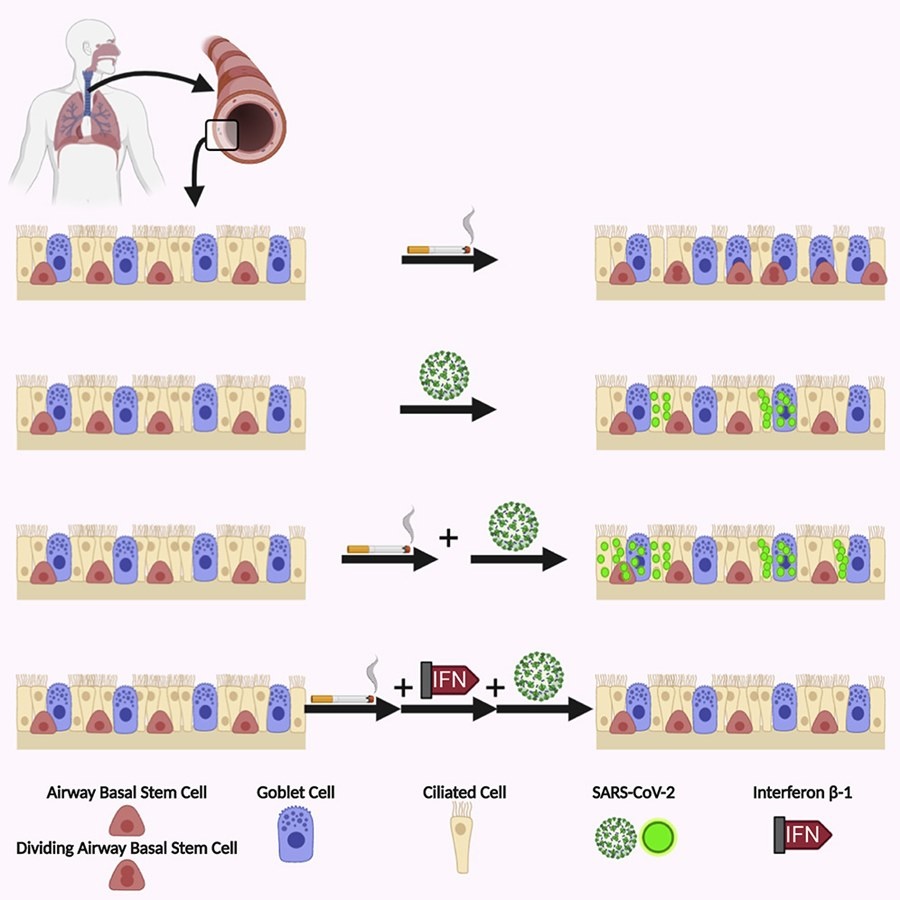Health24.com | SEE | Smoking worsens Covid-19 infection in the airways, new study reveals
- Several studies have found that smoking cigarettes increases the risk of severe Covid-19 and death
- However, until now, scientists haven’t fully understood how this happens
- In a new study, UCLA researchers show how cigarette smoke blocks the first line of defence against infections
Since the early days of the pandemic, questions have been raised about the link between smoking and Covid-19, the disease caused by SARS-CoV-2.
In June this year, the World Health Organization stated that, based on existing literature assessing the association between smoking and Covid-19, there was “insufficient information to confirm any link between tobacco or nicotine in the prevention or treatment of Covid-19”.
However, more recent studies have shown that while smokers are not at risk of contracting infection, their risk of severe disease and death, once infected, is higher than that of non-smokers, although the ways that cigarette smoke exposure affects airway cell infection by SARS-CoV-2 have not been very clear.
A new study by scientists at the Eli and Edythe Broad Center of Regenerative Medicine and Stem Cell Research at the University of California has helped understand how this happens by investigating SARS-CoV-2 infection on a cellular and molecular level – using a model of airway tissue created from human cells.
Their report was published in Cell Stem Cell.
The study
To perform their study, the scientists employed a platform known as an air-liquid interface culture. Essentially, this is grown from human airway stem cells and closely replicates how the airways behave and function in humans.
The airways carry air breathed in through the nose and mouth to the lungs, also functioning as the body’s first line of defence against airborne pathogens, such as viruses, the authors noted.
“Our model replicates the upper part of the airways, which is the first place the virus hits,” said Brigitte Gomperts, a professor of pulmonary medicine and member of the UCLA Jonsson Comprehensive Cancer Center.
“This is the part that produces mucus to trap viruses, bacteria and toxins and contains cells with finger-like projections that beat that mucus up and out of the body.”
This type of model, Gomperts explained, has previously been used to study lung diseases for over a decade and has been shown to mimic the changes in the airway that can be seen in someone that smokes.
‘Smoking cigarettes is like creating holes in these walls’
The air-liquid cultures used in the study were grown from airway stem cells that were taken from the lungs of five young, healthy, non-smoking tissue donors.
To replicate the effects of smoking, the researchers exposed these airway interface cultures to cigarette smoke for three minutes per day over four days.
They then infected the cultures exposed to cigarette smoke (along with identical cultures that had not been exposed) with live SARS-CoV-2 viruses.
The two groups were compared. In the models exposed to smoke, the researchers saw between two and three times more infected cells.
A more in-depth analysis led to the conclusion that smoking resulted in more severe infection, at least in part, by blocking the activity of interferons (which play a critical role in the body’s early immune response to fight the virus).
“If you think of the airways like the high walls that protect a castle, smoking cigarettes is like creating holes in these walls,” Gomperts said.
“Smoking reduces the natural defences, and that allows the virus to set in.”
READ | Covid-19 deaths: Surprise findings on smoking and other insights from study of 17m patients
READ | Covid-19 is more severe in smokers, an analysis of 19 studies show
READ | Why the cigarette ban during lockdown? Five medical experts weigh in
Image: Basil MK/Pexels


